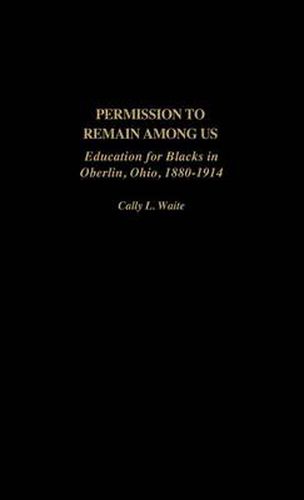Readings Newsletter
Become a Readings Member to make your shopping experience even easier.
Sign in or sign up for free!
You’re not far away from qualifying for FREE standard shipping within Australia
You’ve qualified for FREE standard shipping within Australia
The cart is loading…






The community of Oberlin, Ohio, was founded as an evangelical community in 1833 and in 1834, Oberlin College became one of the first American colleges to admit black students. The story of Oberlin–both community and college–mirrors the story of race in America. The decision to admit black students to Oberlin College, and offer them the same curriculum as their white classmates, challenged the notion of black intellectual inferiority that prevailed during the antebellum period. Following the model of the college, the public schools of Oberlin were integrated in direct opposition to state laws that forbade the education of black children with public funds. However, after Reconstruction (1877), the nation tried to negotiate the future of a newly freed and barely educated people. In Oberlin, this change was evidenced by the gradual segregation of black students at the college. In the community, newly segregated neighborhoods, houses of worship and social interaction took hold in the former interracial utopia. The country looked to Oberlin as a model for integrated education at the end of the 19th century only to find that it, too, had succumbed to segregation. This study examines why, and focuses on the intersection of three national issues: the growth of the black church, increased racism and discrimination, and the transformation of higher education.
$9.00 standard shipping within Australia
FREE standard shipping within Australia for orders over $100.00
Express & International shipping calculated at checkout
The community of Oberlin, Ohio, was founded as an evangelical community in 1833 and in 1834, Oberlin College became one of the first American colleges to admit black students. The story of Oberlin–both community and college–mirrors the story of race in America. The decision to admit black students to Oberlin College, and offer them the same curriculum as their white classmates, challenged the notion of black intellectual inferiority that prevailed during the antebellum period. Following the model of the college, the public schools of Oberlin were integrated in direct opposition to state laws that forbade the education of black children with public funds. However, after Reconstruction (1877), the nation tried to negotiate the future of a newly freed and barely educated people. In Oberlin, this change was evidenced by the gradual segregation of black students at the college. In the community, newly segregated neighborhoods, houses of worship and social interaction took hold in the former interracial utopia. The country looked to Oberlin as a model for integrated education at the end of the 19th century only to find that it, too, had succumbed to segregation. This study examines why, and focuses on the intersection of three national issues: the growth of the black church, increased racism and discrimination, and the transformation of higher education.